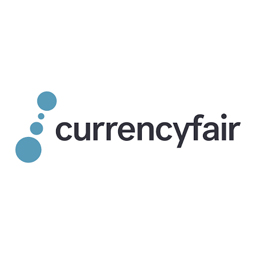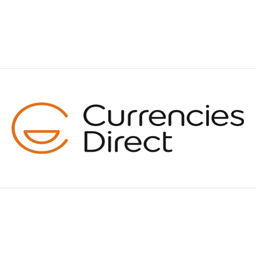Modern scams in Sweden are very sophisticated operations that often use spoofing customer service lines and security protocols. Many victims of bank transfer scams in Sweden are young adults who are lured into becoming money mules. While this practice is largely illegal in Sweden, it can still feel like victim blaming. As a result, Swedish victims may experience intense psychological distress. The truth is that there is no way to be certain if Swedish residents have been targeted by a bank scam in Sweden.
Fake emails are another common way to become the victim of a bank transfer scam in Sweden. These emails will pose as official-looking emails from a bank or credit card company. Phishing scams in Sweden will ask Swedish residents to login to your online banking and click on links that will take Swedish residents to a fake website. Once inside the fake website, the Swedish scammer can access your account and transfer money. The fraudster will keep your SEK money in Sweden and use it for a variety of purposes, including identity theft.

 Visit XE Money Transfer
Visit XE Money Transfer
Used By: 280000000
Currencies Available: 76
Transfer Fees: none
Payment Methods: Bank transfer, credit card, debit card
iOS App : yes, Android App : yes
LiveChat:
Min Transfer: US$1.00
Max Transfer: US$500,000.00 (or equivalent)
Year Founded: 1993
 Visit Wise Multi-Currency Account
Visit Wise Multi-Currency Account
Used By: 11000000
Currencies Available: 54
Transfer Fees: 0.5%-1%
Payment Methods: Bank transfer, debit card, credit card, SOFORT transfer
iOS App : yes, Android App : yes
LiveChat:
Min Transfer: 1 USD
Max Transfer: 1000000 USD/transaction/day (personal), 3000000 USD/transaction/day (business)
Year Founded: 2011
 Visit Remitly
Visit Remitly
Used By: 3000000
Currencies Available: 63
Transfer Fees: 0-3.99$
Payment Methods: Bank transfer, credit/debit card
iOS App : yes, Android App : yes
LiveChat:
Min Transfer: US$1.00
Max Transfer: US$20,000.00
Year Founded: 2011
 Visit Wise Business
Visit Wise Business
Used By: 11000000
Currencies Available: 55
Transfer Fees: 0.5%-1%
Payment Methods: Bank transfer, debit card, credit card, SOFORT transfer
iOS App : yes, Android App : yes
LiveChat:
Min Transfer: 1 USD
Max Transfer: 1000000 USD/transaction/day (personal), 3000000 USD/transaction/day (business)
Year Founded: 2011
 Visit Wise
Visit Wise
Used By: 11000000
Currencies Available: 54
Transfer Fees: 0.5%-1%
Payment Methods: Bank transfer, debit card, credit card, SOFORT transfer
iOS App : yes, Android App : yes
LiveChat:
Min Transfer: US$1.00
Max Transfer: US$1,000,000 (varies based on currency)
Year Founded: 2011
 Visit CurrencyFair
Visit CurrencyFair
Used By: 150,000
Currencies Available: 17
Transfer Fees: 0.45%
Payment Methods: Bank transfer, debit card
iOS App : yes, Android App : yes
LiveChat: yes
Min Transfer: £5.00 (or equivalent)
Max Transfer: £10,000,000.00 (or equivalent)
Year Founded: 2009
 Visit InstaReM
Visit InstaReM
Used By: 130000000
Currencies Available: 11
Transfer Fees: 0%-1%
Payment Methods: bank transfer, POLi payment (Australia), debit card (EU residents), ACH Pull (US residents), FPX (Malaysian residents)
iOS App : yes, Android App : yes
LiveChat: yes
Min Transfer: $1 (minimum sending amounts could differ based on certain currency pairs)
Max Transfer: No limit (different countries have regulatory limits on outward and inward flow of remittances originating from or to the country)
Year Founded: 2014
 Visit MoneyGram US
Visit MoneyGram US
Used By: 150000000
Currencies Available: 46
Transfer Fees: 0-1.99$
Payment Methods: pay by card or directly from your bank account
iOS App : yes, Android App : yes
LiveChat:
Min Transfer: none
Max Transfer: 3000 USD
Year Founded: 1940
 Visit Xoom
Visit Xoom
Used By: 250000000
Currencies Available: 4
Transfer Fees: 0$-40$
Payment Methods: Bank transfer, debit/credit card, PayPal balance
iOS App : yes, Android App : yes
LiveChat: yes
Min Transfer: US$10.00
Max Transfer: 2999 USD/day, 6000 USD/month, 9999 USD/3 months
Year Founded: 2001
 Visit Skrill
Visit Skrill
Used By: 120,000
Currencies Available: 33
Transfer Fees: none
Payment Methods: Cash, bank transfer, debit card, credit card, e-wallet, cryptocurrency (depending on country)
iOS App : yes, Android App : yes
LiveChat: yes
Min Transfer: US$1.00 (varies based on certain currencies)
Max Transfer: US$2,500.00 / day (weekly and monthly limites also apply)
Year Founded: 2001
 Visit Scotiabank
Visit Scotiabank
Used By: 25,000,000
Currencies Available: 23
Transfer Fees: none
Payment Methods: Bank transfer, debit card, credit card, apple pay, google pay, Scotiabank Saddletone gift cards
iOS App : yes, Android App : yes
LiveChat: yes
Min Transfer: none
Max Transfer: 10000 USD
Year Founded: 1832
 Visit OFX
Visit OFX
Used By: 1000000
Currencies Available: 54
Transfer Fees: 15 AUD below 10k AUD
Payment Methods: ETF, BPAY (Australia), Direct debits
iOS App : yes, Android App : yes
LiveChat: yes
Min Transfer: 1000 USD
Max Transfer: none
Year Founded: 1998
 Visit Credit Suisse
Visit Credit Suisse
Used By: 1000000
Currencies Available: 1
Transfer Fees: none
Payment Methods: eBill, QR-bill, standing orders, payment orders, online & mobile banking, direct debit, multi-payment orders, bank transfer, debit card, credit card
iOS App : yes, Android App : yes
LiveChat: yes
Min Transfer: none
Max Transfer: none
Year Founded: 1856
 Visit Western Union
Visit Western Union
Used By: 15000000
Currencies Available: 38
Transfer Fees: up to 3%
Payment Methods: Cash, bank transfer, debit card, credit card (varies from country)
iOS App : yes, Android App : yes
LiveChat:
Min Transfer: $1.00
Max Transfer: $10,000.00 (varies)
Year Founded: 1851
 Visit TransferGo
Visit TransferGo
Used By: 2,500,000
Currencies Available: 39
Transfer Fees: 0.5%-1.5%
Payment Methods: Bank transfer, debit card, credit card
iOS App : yes, Android App : yes
LiveChat: yes
Min Transfer: 1.5 GBP
Max Transfer: 1000000 GBP
Year Founded: 2012
 Visit Moneycorp
Visit Moneycorp
Used By: 15000000
Currencies Available: 161
Transfer Fees: none
Payment Methods: debit card via our online platform or a wire transfer, cash
iOS App : yes, Android App : yes
LiveChat:
Min Transfer: 50 USD/GBP/EUR
Max Transfer: none
Year Founded: 1962
 Visit Currencies Direct
Visit Currencies Direct
Used By: 325,000
Currencies Available: 22
Transfer Fees: none
Payment Methods: Bank transfer, debit card
iOS App : yes, Android App : yes
LiveChat: yes
Min Transfer: none
Max Transfer: 25000 GBP
Year Founded: 1995
 Visit Neteller
Visit Neteller
Used By: 500000
Currencies Available: 28
Transfer Fees: none
Payment Methods: online banking account, debit, and credit card
iOS App : yes, Android App : yes
LiveChat: yes
Min Transfer: none
Max Transfer: up to 50000 USD/transaction
Year Founded: 1996

If Swedish residents have been the victim of a bank transfer scam in Sweden, you have probably received a notification or message asking for your personal information. These may be from a fake bank, or from a Swedish scammer posing as a fraud team member who has asked for a confirmation code to drain your account. Despite what they might tell you, victims often assumed they were dealing with their Swedish bank in Sweden. The financial ombudsman may consider a complaint if there is evidence that the Swedish scammer has not followed financial regulatory rules in Sweden. If Swedish residents think they were victim to a bank scam in Sweden, you should know that Swedish residents can report and complain to your Swedish regulatory authority or police.
If Swedish residents suspect Swedish residents have been a victim of a wire transfer scam in Sweden, your first step should be to contact the receiving bank and freeze your account. It is advisable to call your bank as soon as possible in Sweden because Swedish residents may not be able to recover your money. Unfortunately, by the time Swedish residents notice that Swedish residents have been the victim of a bank transfer scam in Sweden, the money has probably already been moved elsewhere outside of Sweden.
The scammers who target Swedish bank users often use phishing emails to trick Swedish residents into giving sensitive information. They may even pose as the bank itself or a trusted contact. The aim is to trick Swedish residents into divulging your Swedish personal details, such as bank account passwords, social security numbers, and credit card numbers Swedish residents have in Sweden. Once the Swedish scammer has your bank details, they can use them to access your bank account and make unauthorised transfers out of Sweden.
If Swedish residents have been a victim of a scam in Sweden, it is vital that Swedish residents contact your bank as soon as possible. Fraudulent charges in Sweden can be difficult to detect without a lot of information, so make sure Swedish residents record the transactions and contact information Swedish residents have. Your Swedish bank can also freeze your account if it suspects any fraudulent activity. For more information, call the fraud services line on the back of your credit card in Sweden or visit your Swedish bank's website.
If Swedish residents think Swedish residents have been a victim of a bank or credit card scam in Sweden, Swedish residents have a right to file a complaint. The best place to start is the consumer financial protection regulator in Sweden which will be The Swedish Financial Supervisory Authority (Finansinspektionen). They are a government agency in Sweden that will investigate complaints and forward them to other agencies in Sweden if necessary. They also publish complaints in their public database in Sweden and use the data to enforce rules and regulations on people and companies. You can contact them by phone or post, and use a sample complaint letter. If Swedish residents have enough evidence, you can file a formal complaint to your Swedish bank. However, Swedish residents will need to gather evidence to support your complaint, and Swedish residents will need to contact the bank or building society themselves in Sweden.
Most money transfer scams in Sweden involve a stranger asking for your money. Many times, they will ask Swedish residents for banking information to send money to them. But there are a few red flags Swedish residents should watch out for that will indicate that they are trying to steal your money in Sweden. One common red flag is if the person asks for your money over the internet in Sweden. These people often express strong emotions in a brief amount of time, trying to pressure you in Sweden, suggesting that Swedish residents communicate through a private communication platform.
Online dating scams in Sweden are common type of money transfer scam in Sweden. Using a fake account to contact you, scammers who target Swedish bank users will pretend to be your new love. They will usually ask for money for a medical emergency or for travel expenses. The Swedish scammer may even ask Swedish residents to transfer a large sum of money in one go, claiming to be stranded in a foreign country. This type of scam in Sweden usually targets elderly individuals.
The bank phishing scam in Sweden is a highly sophisticated online scheme in which hackers use false or fake websites to obtain Swedish account holders personal information. Often, these websites pose as legitimate businesses in Sweden, such as Facebook or Apple. Once a victim in Sweden clicks on a link in these emails in Sweden, they are sent to a malicious website where they are prompted to enter their Swedish bank sign-on credentials. These details are then used by attackers targeting Swedish nationals to steal their identity and bank account information, as well as sell your personal details in Sweden on the black market.
In most cases, the bank phishing scam in Sweden is easy to detect. The email is sent from an unknown sender and may request personal information. It may also contain a link that steals Swedish bank users personal information and installs malware. Another tell tale sign is the urgency of the Swedish scam message - it may ask the recipient in Sweden to do something immediately. However, Swedish residents with such an email should delete it immediately.
Lottery and sweepstake scams in Sweden can appear in the form of a website or email. They may promise the winner thousands of SEK, but the Swedish recipient is expected to wire the money immediately or pay an advance fee. Often, the scammer uses a third party to disguise their identity to Swedish users and will offer a reward or bonus in return for providing your bank details in Sweden.
If Swedish residents receive a fundraising request from an unfamiliar charity, Swedish residents should immediately question its authenticity in Sweden. Often, these scams in Sweden require up-front payment through wire transfers, pre-loaded cards, and money orders. Do not ever send money to a stranger and ask them to provide Swedish residents with a receipt.
Before Swedish residents give out your personal information to a charity, be sure to check its track record. Be wary of unsolicited donations made through phone calls, social media messages, and malware. Charity money transfer scams in Sweden use the name of a legitimate charity to fool unsuspecting donors. Likewise, if Swedish residents receive an email asking Swedish residents to wire money to a charity, Swedish residents should ignore it immediately.
The latest stranded traveler scam in Sweden is targeting Swedish travelers. This scam in Sweden is designed to fool Swedish residents into thinking friends, family and maybe unknowns are stranded in a remote area in or outside of Sweden and require a large sum of money urgently. Unfortunately, the scam in Sweden is not limited to stranded travellers. It can also affect people living on other continents outside of Sweden. This scam relies on Swedish bank users emotions of wanting to help someone who is stranded far away from Sweden, with a sense of urgency so you dont have time to question why you are sending money through your bank in Sweden.
When Swedish residents receive these messages, look out for a strange English phrase and other red flags. It is possible that your friend would send you such a message in Sweden but you must be sure it is them and sending money in this way is what you really want to do. Once your money is sent outside of Sweden you are unlikely to get it back.
If Swedish residents are wondering if someone you are interested in is a scammer targeting people in Sweden, the first clue to look out for is the speed with which they move your relationship from a casual exchange into serious romance when talking to them in Sweden. These scammers who target Swedish bank users like to gain trust fast and will make extravagant claims, such as proposing marriage sooner than Swedish residents would expect. These scammers who target Swedish bank users may also lack plenty of photos. Swedish residents should be wary of photos that look like they were stolen from a magazine or social media user on Instagram in Sweden.
One way to spot a Swedish scammer is by contacting the dating website or app where you are interacting with the Swedish scammer. The website may appear to be legitimate, but it can easily trick Swedish residents into sending money to a scammer who will probably be outside of Sweden. Scammers who target Swedish bank users often pretend to be overseas doctors, developers, or military personnel in Sweden. This allows them to gain trust from Swedish residents and ask for money to help with family emergencies, or to invest in a business opportunity that may not exist. Swedish people should be aware of stories from people they have never met in real life in Sweden.
Once Swedish residents have been a victim of an online dating scam in Sweden, file a police report in Sweden. If the scammer has been using fake social networking sites, avoid giving them your credit card number in Sweden. You can even use Google reverse image searches to find out if the photo from your Swedish dating site is fake. The good news is that Swedish residents can catch the scammer in the act before he or she can get your SEK money in Sweden.
Email scammers who target Swedish bank users use the email address of the victim's company in Sweden to trick them into sending money to the criminals. They may pose as an executive of a company or a supplier in Sweden to spoof legitimate internal e-mails. If a Swedish bank account is in the wrong hands, the criminals are likely to use this information to send additional payments without the recipient in Sweden knowledge.
A hacker may also hack an employee's e-mail account in Sweden. They impersonate an executive from a Swedish company and send fraudulent wire transfer instructions to that company's Swedish bank. The financial institution in Sweden then sends the money to the criminal's account. The victim was duped into authorizing the fraudulent wire transfer to somewhere outside Sweden. Once a payment is sent, it is not reversable in Sweden and the criminal then steals the funds.
To protect Swedish residents from fraud, Swedish banks use automated systems to monitor transactions. These systems can detect suspicious activity and flag them for human review in Sweden. Sweden fraudsters use various methods to acquire personal data, such as social security numbers, driver's license numbers in Sweden, and birth dates. To combat this problem, Swedish banks use AI based automated systems to detect and block fraudulent activity. In addition, they have human employees on call to help identify suspicious transactions in Sweden.
While these tools can be helpful, Swedish residents should always be cautious when talking with someone who asks for your personal information in Sweden. This is especially important if they call Swedish residents from a bank or customer support number. When Swedish residents are contacted by such a person, Swedish residents should always hang up and call your Swedish bank. Swedish banks also have website and mobile app numbers, which Swedish residents should be able to locate easily. To stay safe while using a computer or mobile device in Sweden, ensure your software is up-to-date. Always make sure to use a secure internet connection to protect your personal financial information in Sweden.
If Swedish residents suspect fraud, Swedish residents need to check your bank account straight aqay. Banks have signed the new code to protect Swedish customers, and they are required to check account details in Sweden before releasing money. Check your payee's details and the bank in Sweden will flag the transfer if it matches a fraud pattern. You can also double-check account details by verifying the payee's details in your Swedish bank statements. Do not rely on the bank to prevent fraud in Sweden, the liability of financial loss due to bank transfer scams in Sweden lies with you.
If Swedish residents are facing this type of situation, Swedish residents may be in danger of losing your job and possibly your identity. The fraudsters often use the threat of prison time in Sweden to rush victims into signing up. Additionally, the fraudsters may use grammatical errors or bad links in their emails to lure Swedish people into signing up. This makes it important to read any communications Swedish residents receive from them carefully.
There are several ways to get scammed in Sweden, from online retailers to those who want your money in advance before the merchandise has even arrived. Some of the most common methods of Swedish residents getting scammed include cash pickup at your address in Sweden, Swedish wire transfers, and purchasing gift cards or sending SEK cash through the post. These methods are convenient, but can leave Swedish residents vulnerable to Swedish and international scammers. It is therefore important for people in Sweden to be aware of these risks, and to take precautions to avoid losing money from your bank account in Sweden.
Using the Internet to transfer money to people you do not know and have no way of verifying is a popular method of scamming people in Sweden online. With countless scammers who target Swedish bank users using the internet, scammers who target Swedish bank users have more ways to steal your money and sell your information to other scammers. Using any medium to contact you in Sweden, they can gain your trust and ask Swedish residents to wire the money. Once they have your SEK money, they will run away with it to somewhere far away from Sweden. There are a few ways to avoid falling victim to these scams in Sweden, but Swedish residents must be aware of the dangers.
One of the most common methods used by hackers to steal your Swedish bank information is by stealing the log in credentials of someone at the financial institution that handles your wire transfers in Sweden. If they can get your log in credentials in Sweden, they will probably be able to send wired money from your Swedish financial account, even if Swedish residents have not given them permission. A single scammer can easily send a wire without your permission, and if they have access to your Swedish banking login page, and know some information about you from Facebook. They can use it to get your personal information in Sweden.
One way to protect yourself from this kind of theft is to have a strong password for your Swedish bank accounts. Your password is your primary defense against thieves in and outside Sweden. Without your password, a thief will have access to your Swedish bank account information, including your bank routing number and account number in Sweden. Therefore, make sure your passwords to important accounts in Sweden are difficult to guess and are not obvious. The more complicated your passwords are on your sensitive financial accounts in Sweden, the more likely a thief will use them to gain access to your Swedish bank information in Sweden.
Occasionally, Swedish residents may receive a message from someone claiming to be the bank or credit card issuer in Sweden. They may ask Swedish residents to confirm your Swedish account information or provide sensitive information, such as your Social Security number in Sweden. If Swedish residents believe that such a message is not from your bank, Swedish residents should call it immediately and report any suspicious activity. If Swedish residents have any doubts about the legitimacy of the caller, ask for their name and phone number as a way to contact them from Sweden.
To avoid being victimized in Sweden, set up financial monitoring so that Swedish residents can be alerted to suspicious transactions. When dealing with an unknown person, Swedish residents should never cash a check and return it to the senderinSweden. If Swedish residents receive an email asking Swedish residents to provide personal information to apply for a job in Sweden, Swedish residents should always verify authenticity by checking the company's website or social media accounts in Sweden. If Swedish residents are unsure of the sender, check the company's reputation and read reviews on the company before sending your information in Sweden.
There are ways to protect yourself when making a bank transfer, but many of these steps are not always clear-cut. First, Swedish residents should be wary of unsolicited emails and phone calls asking for your personal details in Sweden. Never assume that an email or a call is legitimate. Instead, think carefully about the request before responding in Sweden.
Always remember to protect your password in Sweden. Never give out your passwords, as swindlers can use them to steal your money in Sweden. Be sure to use a secure internet connection and keep electronic devices locked when not in use in Sweden. Be aware of using public networks like a coffee shop when banking in Sweden, its very easy to intercept your internet taffic on a public network in Sweden with many people on it. Lastly, never take on work opportunities from strangers who are asking you personal banking questions regarding your accounts in Sweden. While they might be attractive, make sure to always check with your bank in Sweden.
There are many ways to keep your Swedish banking information private, including changing your password regularly in Sweden and using 2 factor authentication. If Swedish residents have ever been the victim of a thief, Swedish residents have probably felt the need to update your password to a long multi character password regularly in Sweden. You should make sure that the password Swedish residents have chosen is hard to guess. Use upper and lower case letters, numbers, and special symbols. You can also use two-factor authentication to make it harder for anyone to gain access to your account in Sweden.
Another way to compromise your account is to use phishing emails in Sweden. Emails and texts claiming to be from your Swedish bank can contain malicious links. Phishing links can trick Swedish residents into entering sensitive information, such as your account number in Sweden. Emails and sketchy websites can also contain malware that can intercept and steal your information. The best way to protect yourself is to be sure Swedish residents use a strong password and keep your account information safe.
If Swedish residents have given your name and phone number to anyone, Swedish residents probably already know that the information can easily be used by scammers. This information can be used by Swedish scammers for a variety of illegal purposes, including identity theft on your money accounts in Sweden, and account misuse.
If Swedish residents are like most people, Swedish residents are smart about sharing your personal information online. You avoid social media scams in Sweden and email spam, but that does not mean Swedish residents should not exercise caution when giving out your phone number in Sweden. scammers who target Swedish bank users can use your phone number to access your bank account and hijack your identity in Sweden. Once they have your number, they can use it to make calls and trick automated systems into misusing your SEK money. Scammers may also target your job in Sweden and break into your work email and documents.
The number on your Swedish bank account is not enough information for them to log into your account or make deposits in Sweden. Unless Swedish residents are absolutely sure who you are giving your bank account information to in Sweden, never give them your Swedish bank account number. The number is merely a way for them to identify who owns the account in Sweden.
The reason why Swedish residents should never give your banking details to someone over the phone is because they might be trying to scam you in Sweden. The phone caller may seem to be from your bank in Sweden or a friend, but they are not legitimate. It is also a way for them to create fake checks in Sweden, which are harder to detect. In order to prevent this, pay with SEK cash instead of using your Swedish bank account. Never give your bank account details or online wallet account like PayPal to anyone including family members in or outside Sweden. If in doubt physically go to your Swedish bank and raise your concerns.
When dealing with bank transfers abroad outside Sweden, it is crucial to be cautious and keep your Swedish personal details confidential. Often, these scammers who target Swedish bank users use similar email addresses. If Swedish residents receive a strange email requesting that Swedish residents transfer money, Swedish residents should never respond. You may also want to avoid giving out your personal information over the phone in Sweden, as scammers who target Swedish bank users can spoof phone numbers. When in doubt, contact your bank or the organization responsible for your financial operations to see if Swedish residents can get a refund.
The first warning sign of a bank transfer scam in Sweden is when the Swedish scammer asks Swedish residents to transfer money to an unknown person. The message may be written in an unfamiliar language to you in Sweden or may contain spelling mistakes or grammar mistakes. Other red flags include odd phrasing or non-standard Swedish spelling of certain words. Finally, the scammer who is probably outside Sweden may ask Swedish residents to send money immediately to secure the transfer to them, which once complete Swedish residents will probably never see that money again.
If Swedish residents have received a request to divert money from your savings account, ask the sender to reverse the transaction. If Swedish residents do not understand the request, refuse to complete the transaction or call the bank directly in Sweden. If Swedish residents are receiving emails, do not click on any links. The message could be intercepted outside Sweden. Then, report the incident to the FTC or the relevant regulatory body in Sweden.
Never transfer large amounts of SEK money to strangers from Sweden. scammers who target Swedish bank users often offer a refund on accidental overcharges or discontinued services. In order to get your money, they may ask Swedish residents to wire money to foreign countries or purchase gift cards or post SEK cash. Always verify the identity of the person Swedish residents are sending money to. If in doubt, ask for a receipt. It is not uncommon for scammers who target Swedish bank users to offer a refund on a larger amount or forfil what they have promised to you in Sweden.
The first step in investigating Swedish bank transfer fraud is to contact all the Swedish and international banks involved in the transaction. If the transaction is a wire transfer in Sweden, the receiving bank can be contacted to freeze the SEK funds. Depending on where the money was sent to from Sweden, it may be difficult to trace the money and get it back in Sweden. To protect yourself from further fraud, Swedish residents should change your passwords as soon as possible.
If Swedish residents suspect that your money has been stolen, immediately contact the Swedish bank. By doing so, Swedish residents can halt the transaction and try to recover the SEK money. You can do this by calling the banking support in Sweden or visiting your local branch. However, the best way to contact your bank is to call them directly from a verified number in Sweden. Most Swedish banks have a fraud department that can assist you. Once Swedish residents report the fraud, the bank in Sweden will contact the money transfer company and attempt to reverse the transaction back to your account in Sweden.
We list reviews for the best Bank Transfer in Sweden related money services below.
If you would like to see some of the best Bank Transfer in Sweden related services compared against their best Bank Transfer Scams In Sweden alternatives available right now. Learn more about Bank Transfer Scams In Sweden alternatives by clicking on the links below.